They were frozen solid. Cunningham’s body was in the position of one who was still attempting to handle the boat.
Gold Lifesaving Medal citation for Petty Officer 2nd Class Earl Cunningham, 1936
In retrospect, the five fishermen had to recognize their mistake. Venturing out onto a partly frozen Lake Michigan to fish--they were now tra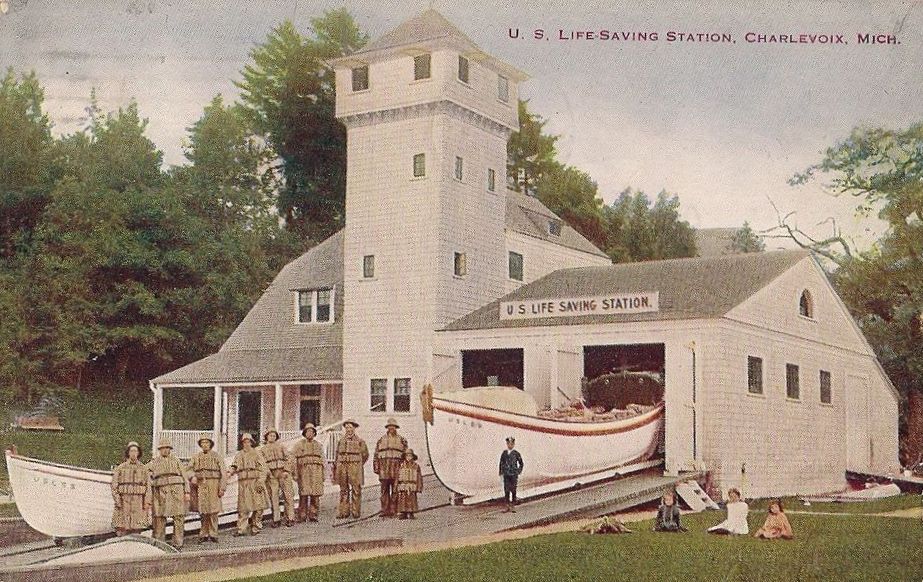 pped. The ice shelf they were standing on had broken loose in the face of wind and seas from an oncoming blizzard.
pped. The ice shelf they were standing on had broken loose in the face of wind and seas from an oncoming blizzard.
In the 1930s, before modern search and rescue systems like the Coast Guard’s Rescue 21 system and ubiquitous marine radios, Coast Guardsmen stood watch on the shore in lookout towers similar to those used by the U.S. Forest Service to spot wildfires. On Sat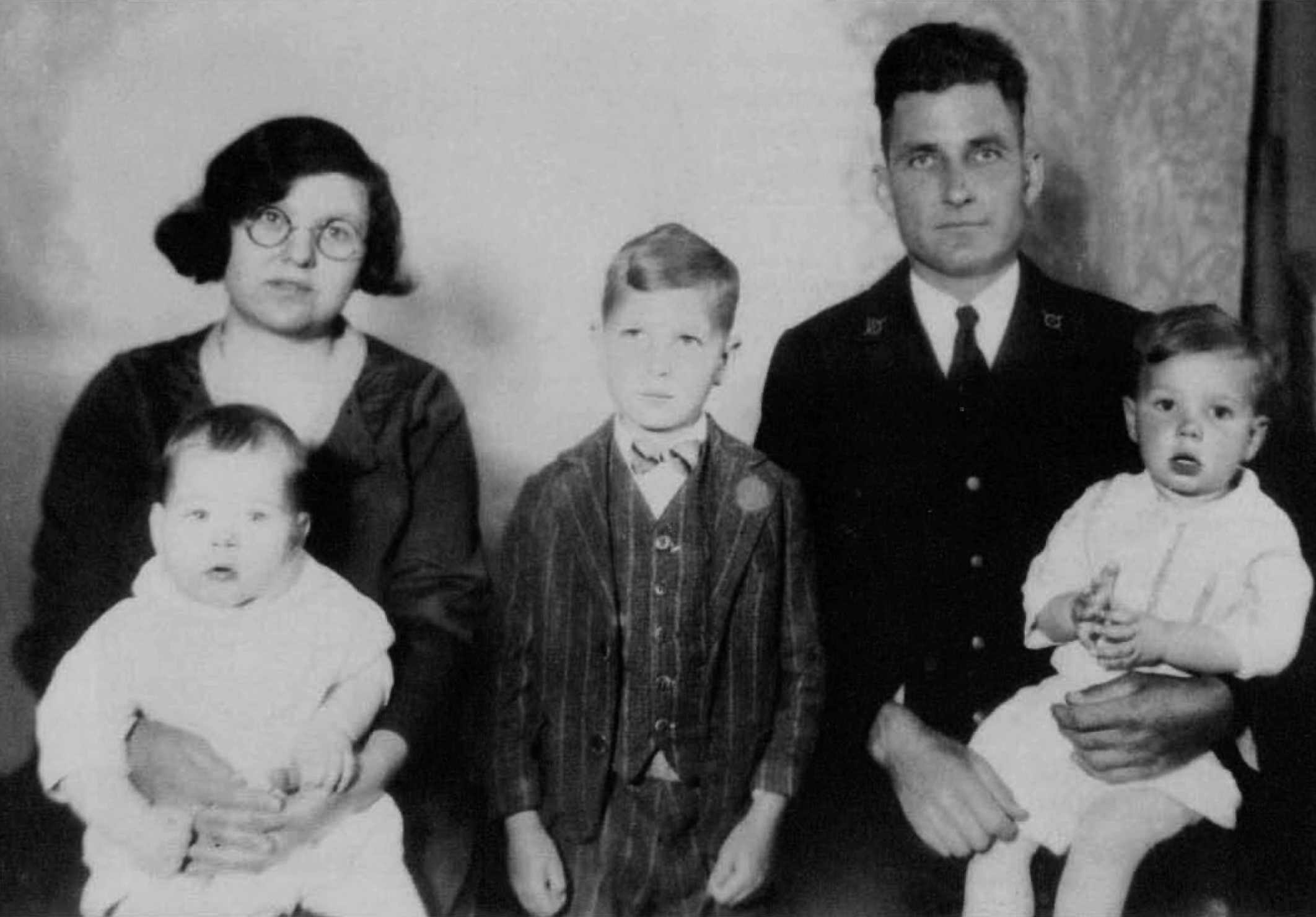 urday, February 8, 1936, at Station Charlevoix, Michigan, a watchstander in the station tower saw the plight of the five fishermen and raised the alarm. The station’s officer-in-charge quickly initiated a rescue mission. With rising winds and temperatures in the teens, a Station Charlevoix surfman deployed and recovered three of the men in a small boat. However, two more, Claude Beardsley and Clayton Brown, were still adrift in the ice.
urday, February 8, 1936, at Station Charlevoix, Michigan, a watchstander in the station tower saw the plight of the five fishermen and raised the alarm. The station’s officer-in-charge quickly initiated a rescue mission. With rising winds and temperatures in the teens, a Station Charlevoix surfman deployed and recovered three of the men in a small boat. However, two more, Claude Beardsley and Clayton Brown, were still adrift in the ice.
Despite it being his day off, 41-year-old Petty Officer 2nd Class Earl Cunningham, a boatswains mate, volunteered to rescue the two fishermen. Born in Michigan in 1895, Cunningham fought in World War I with the U.S. Army in the trenches of France, leaving the service as a corporal. He enlisted in the Coast Guard in July 1928 and was appointed a surfman. A family man, Cunningham was married with three young sons. He served at the Coast Guard Station in Hammond Bay, Michigan, until 1935 when he tran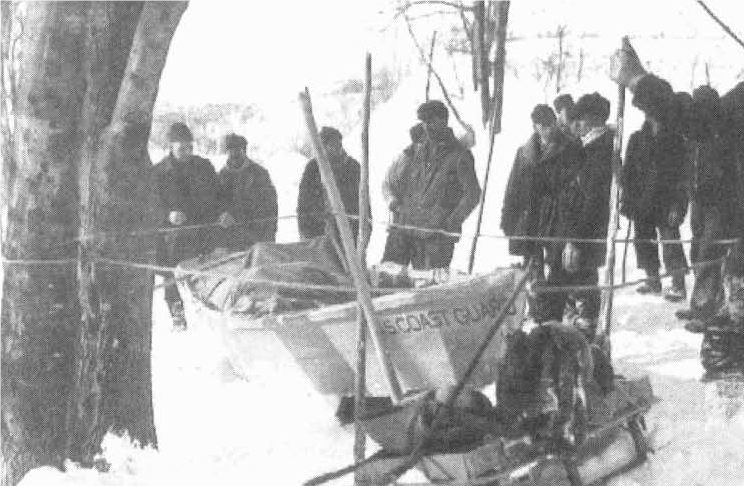 sferred to Charlevoix. He had been assigned to Charlevoix for less than six months when his fateful rescue on the ice took place.
sferred to Charlevoix. He had been assigned to Charlevoix for less than six months when his fateful rescue on the ice took place.
Cunningham volunteered to man a smallboat to rescue the two remaining men. He rowed a skiff out to the ice floe and successfully recovered Beardsley and Brown. When he tried to row ashore, the storm’s wind, waves, and blinding snow made return impossible. He and no choice but to await rescue with the two men he had just saved. Unfortunately, the worsening conditions made the likelihood of rescue more remote than before.
The Charlevoix crew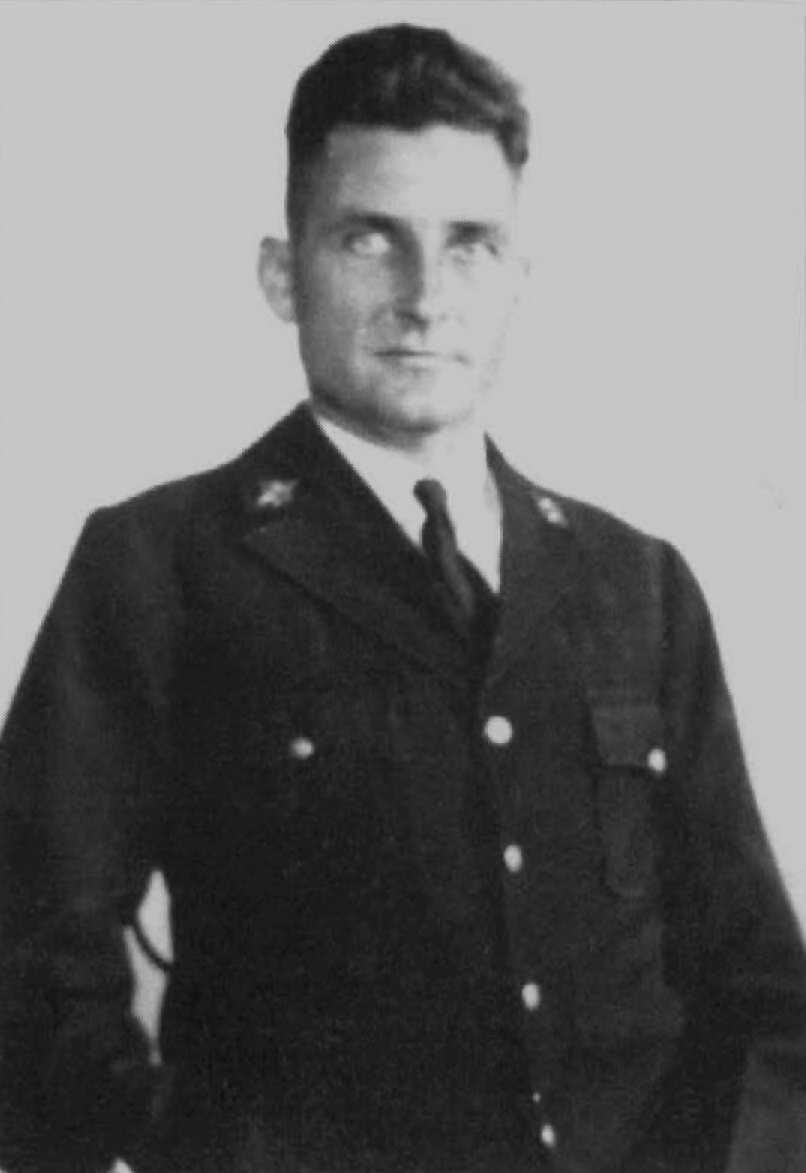 tried to use a small motor launch to locate the skiff and missing men. With time lost struggling to move the craft into position and difficulty getting the boat into the water, their initial search proved fruitless. By early morning on Sunday, February 9th, the half-frozen surfmen returned to the station empty handed. They had searched so long in the bitter cold that one crewmember had to be treated for frostbite. The remaining crewmembers tried a second time, with assistance from volunteers, multiple aircraft and a cutter, but turned up no sign of Cunningham and the fishermen.
tried to use a small motor launch to locate the skiff and missing men. With time lost struggling to move the craft into position and difficulty getting the boat into the water, their initial search proved fruitless. By early morning on Sunday, February 9th, the half-frozen surfmen returned to the station empty handed. They had searched so long in the bitter cold that one crewmember had to be treated for frostbite. The remaining crewmembers tried a second time, with assistance from volunteers, multiple aircraft and a cutter, but turned up no sign of Cunningham and the fishermen.
On Monday afternoon, a man struggled ashore near Good Heart, Michigan, half dead from the cold. It was Clayton Brown, one of the two fishermen Cunningham rescued. He told a harrowing tale of death and survival. Cunningham had died of exposure b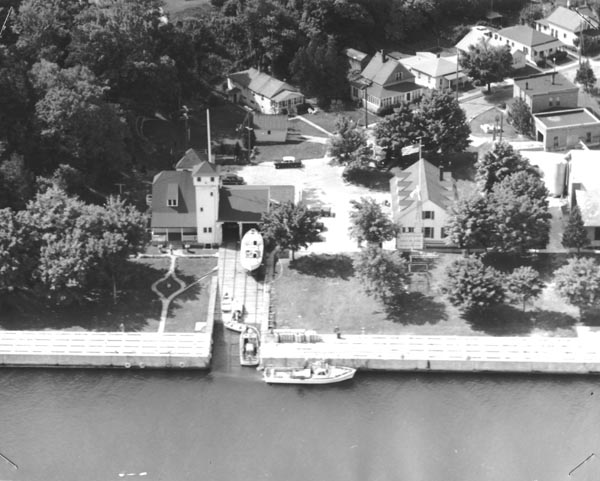 y Sunday evening. Recognizing that they could no longer wait for rescue, Beardsley and Brown began to make their way to shore across the ice, but Beardsley fell through into the freezing waters. Brown recovered him, but Beardsley could go no further and froze to death.
y Sunday evening. Recognizing that they could no longer wait for rescue, Beardsley and Brown began to make their way to shore across the ice, but Beardsley fell through into the freezing waters. Brown recovered him, but Beardsley could go no further and froze to death.
Suffering from hypothermia and frostbite, Brown walked nine miles across the treacherous ice until he reached safety. Brown related what happened to Cunningham and the Station Charlevoix crew members set out to recover their shipmate. On Wednesday, February 12th, Cunningham and Claude Beardsley were located and retrieved. The brave Coast Guardsman was fo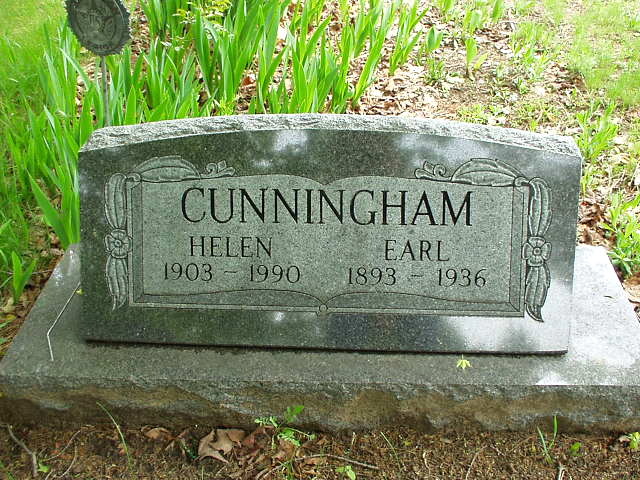 und frozen stiff still manning the oars in the rescue skiff.
und frozen stiff still manning the oars in the rescue skiff.
Clayton Brown would lose both feet to frostbite sustained during the ordeal, but was alive to return to his family thanks to the self-sacrificing effort of aCunningham. For his heroism, Cunningham was posthumously awarded the Gold Life Saving Medal, which was presented to his widow, Helen. Earl Cunningham was laid to rest at Silver Lake Cemetery in Wolverine, Michigan, near his childhood home.
To remember Cunningham’s heroism, a building at the former Coast Guard base on Governor’s Island, New York, was named in his honor. In October of 2019, the service announced that he will become the namesake of a “Sentinel”-Class Fast Response Cutter (WPC-1159), which is expected to be delivered to the Coast Guard in 2023.